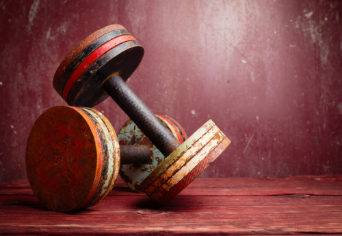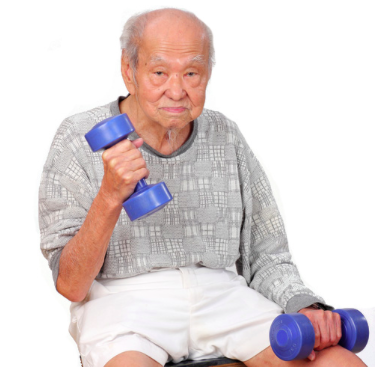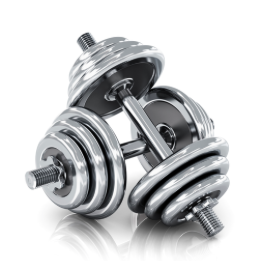Creatine: Much More Than a Muscle Builder
Bodybuilders, and indeed all athletes looking to secure the performance edge would have at least a passing knowledge of the ...

Bodybuilders, and indeed all athletes looking to secure the performance edge would have at least a passing knowledge of the ...
Leucine is the most important of the BCAAs. When it comes to signaling muscle building (protein synthesis), Leucine is King ...
Is it true that resistance training stunts growth in adolescents? And can lifting really reverse the ageing process in older ...
Is fructose REALLY an enemy to fat loss? Does this particular type of sugar REALLY impact body composition to any ...
Not all fats are created equal. Put simply, there are good fats and bad fats: the so called unsaturated and ...
First off, congratulations if you understood my pun. Folic acid or Folate is also known as vitamin B9. The name ...
In the pursuit to naturally increase T-levels, many have turned to testosterone boosters. Today we address their validity, while laying ...
The process of muscle growth is best stimulated with high volume using relatively moderate weights. But to get stronger faster, ...
Why Should You be eating Resistant Starch? RS is a starch that when digested in the large intestine, leads to ...
The importance of fibre as an essential nutrient is often overlooked and the daily requirements of obtaining enough presents a ...
If you look on the back of a vitamin or food package you will see that ingredients are rated as ...
When hypertrophy (muscle building) is your main goal, the food and nutrients you consume around the workout is by far ...
 As all seasoned lifters know, there are certain times in our lives when training performance is optimal and results come easy. In bodybuilding, progress is often most apparent from our late teens to our mid to late twenties. At this stage in our lives, we have several mental and physical advantages. We are hormonally supercharged with naturally high testosterone and growth hormone, mentally supercharged with a youthful enthusiasm, and not yet worn down by the rigors of a long life. Working at either side of this ‘golden age’ is thought to present some unique barriers, but none too great to prevent either group from forgoing the weights for a sedentary lifestyle.
As all seasoned lifters know, there are certain times in our lives when training performance is optimal and results come easy. In bodybuilding, progress is often most apparent from our late teens to our mid to late twenties. At this stage in our lives, we have several mental and physical advantages. We are hormonally supercharged with naturally high testosterone and growth hormone, mentally supercharged with a youthful enthusiasm, and not yet worn down by the rigors of a long life. Working at either side of this ‘golden age’ is thought to present some unique barriers, but none too great to prevent either group from forgoing the weights for a sedentary lifestyle.
Bodybuilding for All Ages
Many feel that bodybuilding is not for everyone. This thinking is faulty for one fundamental reason: every person who exercises – is in some way, shape, or form – building their body. A child who pushes, pulls, and strains their way through gymnastics sessions on a regular basis and becomes stronger and more agile as a result, is bodybuilding. A senior who perseveres through group fitness classes and improves their strength and posture, is bodybuilding. However, achieving the impressive physique that truly separates a bodybuilder from the average individual requires a specialized training regimen.
While it would be ill advised for younger lifters (those 7-12 years old) or older folk (the 50+ category) to train like a bodybuilder in their prime, each of these populations can, when following a proper training program, experience considerable strength and muscle gains. For children and pre-teens, a suitable training regimen will help to establish a dependable foundation for a lifetime of fitness – and for older individuals, training may help improve health and quality of life for years to come.
Child’s Play
 Children are constantly active, unwittingly pushing themselves to undertake more and more challenging physical tasks on a daily basis. However, children under the age of 12 will rarely show impressive muscular development. This is because their growth resources are used to spark development in many other areas, and because their hormonal profile does not support excessive muscularity.[2] However, this does not mean that hitting the iron early is without benefits. The habits and movement patterns children form at an early age, may be beneficial to their health and fitness throughout their entire life.[5]
Children are constantly active, unwittingly pushing themselves to undertake more and more challenging physical tasks on a daily basis. However, children under the age of 12 will rarely show impressive muscular development. This is because their growth resources are used to spark development in many other areas, and because their hormonal profile does not support excessive muscularity.[2] However, this does not mean that hitting the iron early is without benefits. The habits and movement patterns children form at an early age, may be beneficial to their health and fitness throughout their entire life.[5]
That being said, the best time for children to undertake activities more physically challenging than regular playground hijinks, is between the ages of seven and 12. During this period, children are old enough to listen, understand, and exercise safely, while still being young enough to learn at an extraordinary rate. The primary goal of an early exercise program should to develop proper movement patterns. Developing improper movement patterns at this age will be extremely difficult to correct later in life, while developing proper one’s will last for years to come – like riding a bike.
Before we move on to older populations, we must debunk some dogma first. Although many believe that weight training will stunt growth in adolescents, the science says otherwise.[5] You heard that right ladies and gentleman, weightlifting will not stunt growth in children — so as long as they are monitored by a trained professional, children need not avoid the weights.
Older and Bolder: Training for Seniors
 Having both physical and psychological effects, lifting weights builds muscle, strengthens bones, and improves cardiovascular health, while increasing confidence and self image. Resistance training, in its many forms, can also aid in preventing injuries, facilitating daily activities, and can even slow or reverse some of the effects of aging.[4]
Having both physical and psychological effects, lifting weights builds muscle, strengthens bones, and improves cardiovascular health, while increasing confidence and self image. Resistance training, in its many forms, can also aid in preventing injuries, facilitating daily activities, and can even slow or reverse some of the effects of aging.[4]
The primary goal of exercise in older populations is to reinforce proper movement patterns and build strength. Once proper movement patterns have been established and strength levels have begun to improve, training loads can gradually be increased. Even then, given their less than stellar hormonal profile and reduced recovery capabilities, older lifters must keep their training intensity modest and overall volume low. Additional factors must be considered as well — factors such as preexisting medical conditions and prior injuries will govern the various training methods that an individual can safely use. While most elderly individuals should use light weights for moderate to high reps, more physically fit trainees may choose to train in the lower rep ranges with heavier weights. Given the increased possibility of injury and other health related complications, older individuals should be monitored by a trained fitness professional at all times.
Molding The Mindset
A major limiting factor in older or younger persons is how they view the training process and how confident they are about incorporating exercise into their daily routine. For both populations, the training process must be both fun and engaging. For example, the younger lifter can be shown how their greater strength is correlated with improved sporting performances and an ability to outperform their peers, while the senior trainee can be made aware of the fewer number of falls they have experienced and the improved stamina they have while performing routine daily tasks. Enjoyment, practical benefits, and improved quality of life are important determinants of how successful a training programme will be. By ensuring each of these is addressed, a training mindset can be molded and a lifelong love of fitness training can be established, at any age.
Can They Keep Up
Despite the fact older and younger individuals often shy away from the weights, this needn’t be the norm. Training has far reaching benefits for people of all ages. Weight training in  younger individuals has the potential to set the stage for a lifetime of fitness, while weight training in older populations has the potential to restore youth and improve the latter years of one’s life. Contrary to popular belief, both groups can gain considerable strength and a decent amount of muscle. That being said, unique factors must be considered to ensure that younger and older individuals are training optimally. For both younger and older individuals, the focus should be on strength gains and movement patterns, with less of a focus on hypertrophy. Volume and intensity should also be adjusted to account for training experience, preexisting medical conditions, and recovery capabilities. But with that in mind, let’s get up and get in the gym — because everyone can benefit from a little iron in their life!
younger individuals has the potential to set the stage for a lifetime of fitness, while weight training in older populations has the potential to restore youth and improve the latter years of one’s life. Contrary to popular belief, both groups can gain considerable strength and a decent amount of muscle. That being said, unique factors must be considered to ensure that younger and older individuals are training optimally. For both younger and older individuals, the focus should be on strength gains and movement patterns, with less of a focus on hypertrophy. Volume and intensity should also be adjusted to account for training experience, preexisting medical conditions, and recovery capabilities. But with that in mind, let’s get up and get in the gym — because everyone can benefit from a little iron in their life!
References: